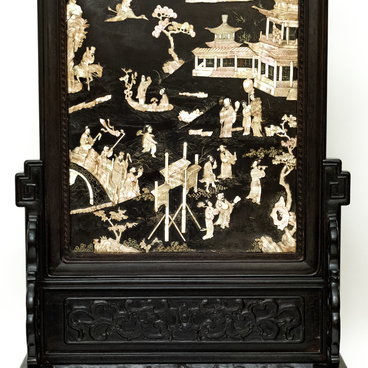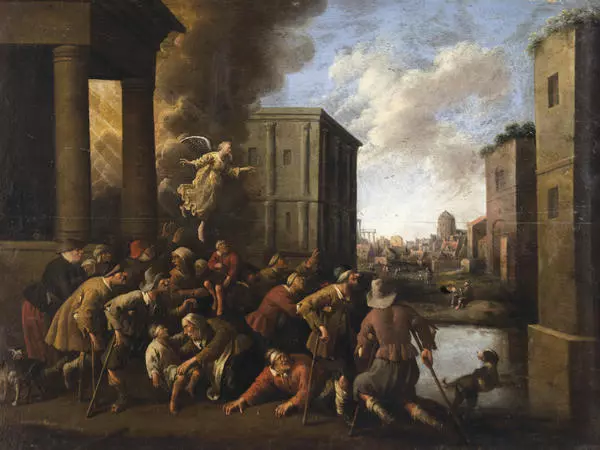The collection of the Sakha Republic National Art Museum includes a painting by Joost Cornelisz Droochsloot “Winemaking.” It is possible that the painting was once part of a series depicting the seasons, with the grape harvest scene symbolizing autumn.
The action takes place on a warm autumn day. The hills offer an idyllic view of the far shore with houses and a bell tower. Blue mountains are visible on the horizon. The composition is multi-figured with various genre scenes. The canvas is of unusual size, stretched horizontally. Judging by the non-standard format of the canvas, the painting was intended for a specific place.
The painting, as befits a work of art of the 17th century, is rich in symbolism that conveys the true meaning of what is happening with the help of objects and images. On the left, in the foreground, two young, dapper cavaliers are depicted sitting behind a barrel — they are the owners of the plantation, who have returned from hunting and tasting wine. On the ground next to them is a gun with a dead hare and dogs. A dog is a symbol of loyalty, but in this context it is a hint of depravity due to promiscuity in choosing partners. A woman in a white cap holding a jug of wine touches the shoulder of a man in a green caftan, inviting him into the house with her, but the pose of a young man smoking a pipe indicates refusal. A peasant leaning on a stick stands nearby, carefully watching what is happening and pointing to a woman with an unambiguous gesture at a sitting man with a raised glass and a round glass bottle with a high neck. An old man with a basket full of grapes on his shoulders walks by. The smoking pipe is a symbol of momentary earthly pleasures. It was used not only to smoke, but also to blow soap bubbles — a reminder of the fleeting nature of human life and the unexpectedness of death. A glass and a bottle of wine are as fragile as human life itself.
In addition, the artist extremely realistically depicts
this scene: the design of an ancient press, the process of making wine, from
harvesting to the final result. The most interesting images in the foreground
are a cooper intently hammering hoops into a barrel, a woman feeding a child
(presumably his wife), and a young man draining wine from a barrel into a
copper vessel. Hoops and a cooper’s tools are on the ground. The painting is
full of subtle psychological nuances, signs and symbols, household items and
attributes of daily life.




